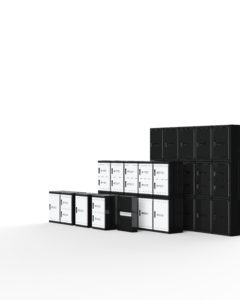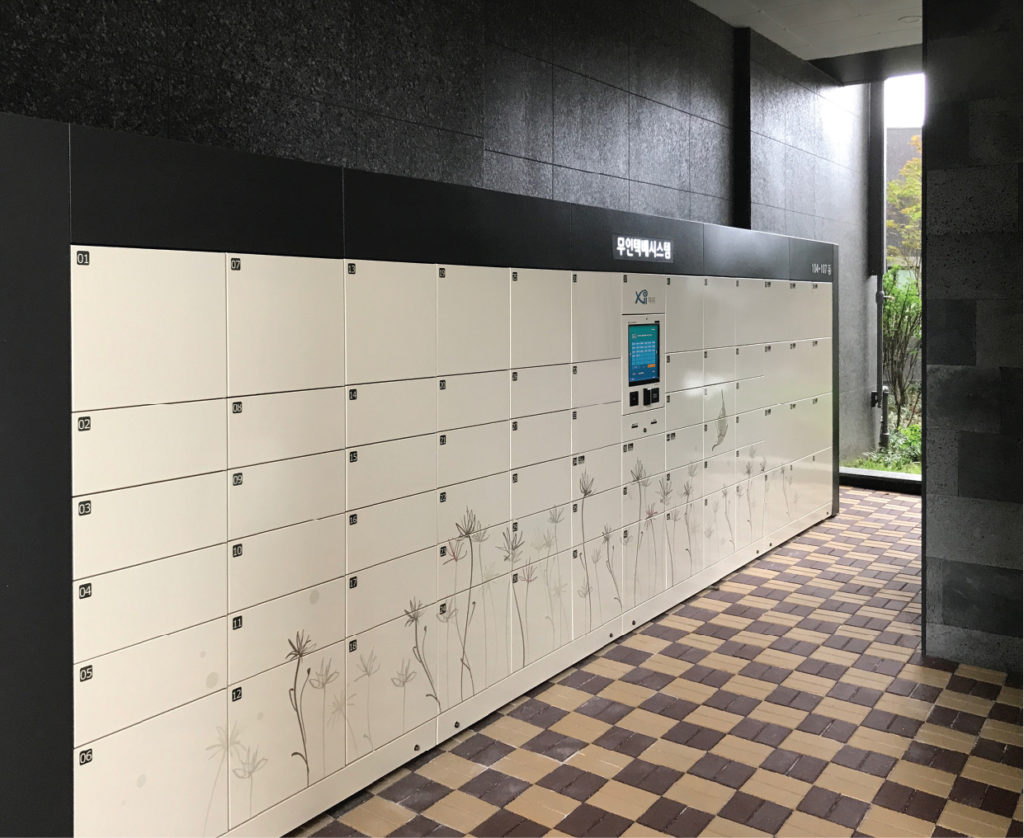Ousmane Fouty Diop, business development representative Europe, Parcel.e, Korea, will give a presentation titled How to implement an efficient network of parcel lockers at this year’s Parcel+Post Expo Conference.
Describe your presentation.
The presentation focuses on a new trend in parcel locker implementation that proves to be more efficient in increasing the density and scale of parcel locker networks and their profitability. This new trend, which has been present for years in Asia, breaks the classical western European last-mile delivery model, where logistic companies and retailers install parcel lockers exclusively for the delivery of their own products.
What is the new business model for lockers, and what benefits does it provide?
The new business model consists of implementing parcel locker networks that are open to all carriers – Amazon, DHL, FedEx, the national post and any local carrier may deliver its parcels to customers using the same parcel locker stations. The proximity to the final customers, as well as simplicity of use, are primary characteristics of this business model and thus attract more users. This model has been implemented in South Korea, where the majority of lockers are units installed by residents or real-estate companies in residential buildings or in the city, financed by City Hall or other public institutions. These lockers are neutral to carriers, are at the disposal of any customer and, best of all, are implemented in a very vast and dense network, allowing customers to have any product delivered wherever they need.
For the carriers the benefits are obvious: this model is more cost-effective as initial investment has been already completed, and some operational costs (maintenance, operational performance, etc) can be shared between all logistics actors using the lockers. As this model also means delivery is successful first time, carriers are able to save redelivery time and costs. Thanks to the high network density, last-mile delivery is accessible to a larger audience. Also the multitude of carriers delivering reinforces the popularity of this solution and as a consequence the number of users grows. Compared with the carrier-specific model, the carrier-neutral solution is more effective with respect to usage density.
The benefits of this model lie in the fact that it makes use of the platform business model, which creates value primarily by enabling direct interactions between logistics actors on the supply side and final customers. This multisided delivery platform not only provides delivery services as such, but also becomes the perfect middleman facilitating last-mile delivery. The suppliers derive value from easier installation, current cost sharing, lower advertising costs and the popularity of the solution. They are also able to use the delivery platform’s legal and commercial framework as well as the payment platform. The final customers have only one place for product deliveries – and it is very nearby. The owner of the delivery platform, whether it is a public institution or a private company, can extract value by charging per transaction or from usage fees paid by affiliate couriers. Revenue can come also from ads printed on the lockers.
 How can delivery companies work together to use shared lockers?
How can delivery companies work together to use shared lockers?
The logistics companies participating in the delivery platform use a unique system to manage delivery and payment. They need to follow the same process for delivery (the way the customer is notified, the delivery deadlines, etc). Different logistics companies compete to satisfy their final customers through the same delivery services. This context can indeed make collaboration difficult, however it is necessary for everyone’s profit. Collaboration can be facilitated mainly by a reasonable affiliate policy – adapted fees for participation and a simple affiliation process. A sufficient number of lockers and easy access to them secures the needs of all carriers and allows companies to avoid conflict. The connection between each carrier’s original system and the unique delivery platform is enabled thanks to the adaptability of the API platform, which can be plugged in to any kind of IT system. A collective design of the delivery process and user experience may also generate agreement. To make collaboration easier, it is recommended to have a leader that will coordinate participants and have them participate in the same way.
Can refrigerated or heated units be used in a shared locker station?
Yes, both refrigerated and heated units can be used as shared lockers. Refrigerated units are already available in Korean carrier-neutral delivery stations. The business model remains the same, but the fee may be different between standard and refrigerated/heated units. It is, however, important to use machines with the lowest energy consumption to offer low operational costs. Currently there is no fee in Korea for carriers for using refrigerated units.
 See Ousmane Fouty Diop, business development representative Europe, Parcel.e, give his presentation at 4:10pm on Tuesday, October 1 in room 1. Interested in learning even more about lockers? Join us at our Workshop: PUDOs & Lockers: the New Power in the Last Mile on Tuesday, October 1 at 9:00am. The full conference program can be found here.
See Ousmane Fouty Diop, business development representative Europe, Parcel.e, give his presentation at 4:10pm on Tuesday, October 1 in room 1. Interested in learning even more about lockers? Join us at our Workshop: PUDOs & Lockers: the New Power in the Last Mile on Tuesday, October 1 at 9:00am. The full conference program can be found here.


